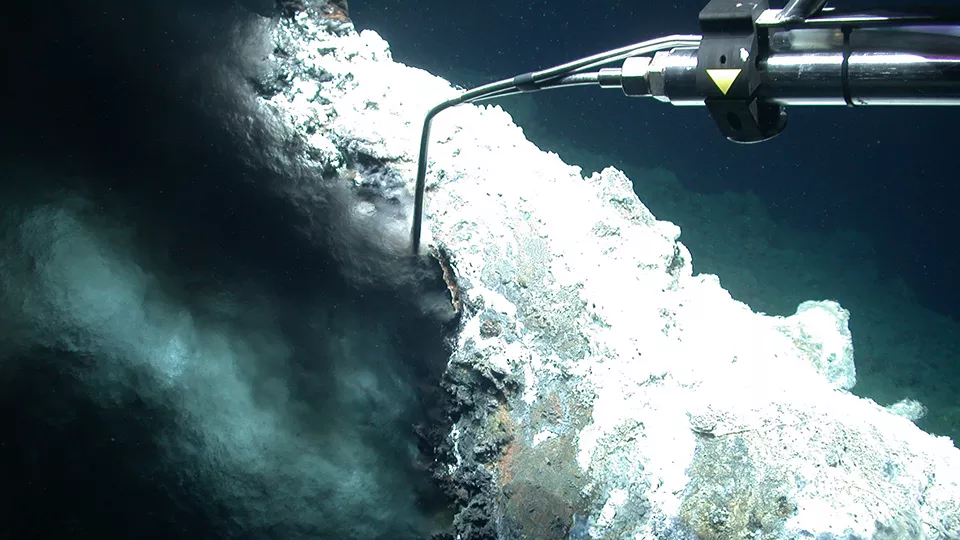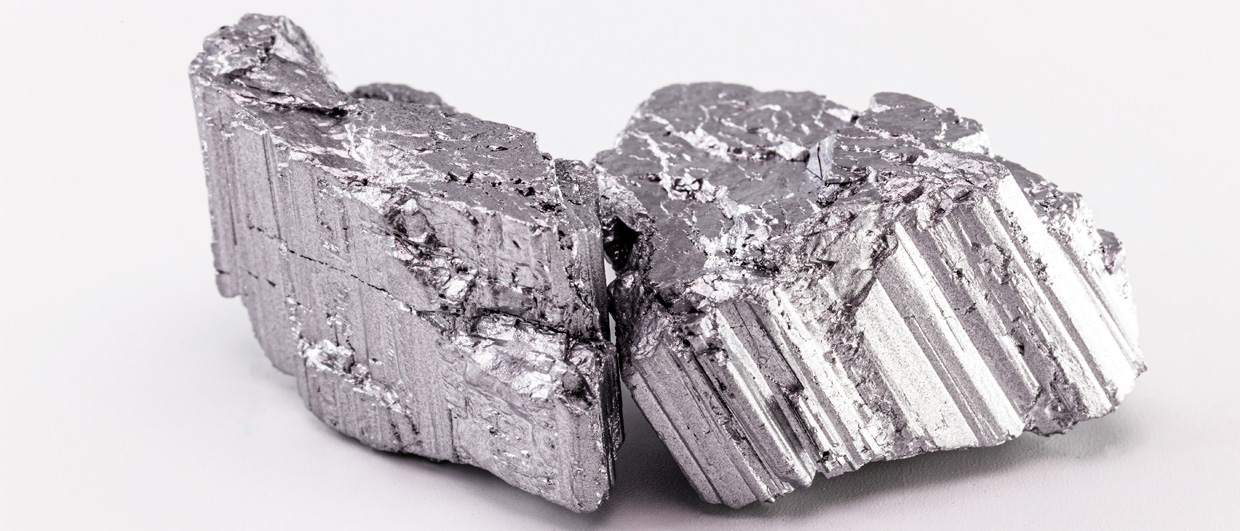Figure caption: The temperature measurement in the outflow opening of the black smoker showed that the fluids are more than 300°C hot. In addition to this active smoker, numerous vents of varying characteristics have been found in the newly discovered Jøtul hydrothermal field.
One of the vents was particularly spectacular and has got its own name.
Although hot springs occur worldwide at spreading ridges around the Earth, hydrothermal vents on the 500 kilometer long Knipovich Ridge, located between Greenland and Spitsbergen, were previously unknown.
Black bodies of water
“Following indications in the water column of hydrothermal activity, we searched the ocean floor with the remotely operated vehicle MARUM-QUEST. We were very happy when we discovered an active black smoker. The metal-containing liquid, which was over 300 degrees Celsius, shot out as if from a stovepipe and turned into a black cloud, the spread of which we could no longer monitor with the ROV,” says Prof. Gerhard Bohrmann from MARUM – Center for Marine Environmental Sciences at the university Bremen, Chief Scientist of Expedition MSM 109.
Based on data from previous studies conducted by the University of Bergen and the Norwegian Petroleum Directorate, there were clear indications in advance of where to look for hydrothermal sources, the Norwegian Petroleum Directorate says in a press release.
Stig-Morten Knutsen, the Norwegian Petroleum Directorate’s observer and geologist on board the cruise, explains that it has previously been searched before without results in large areas with a water depth of 3000 metres.
“All the greater was the joy on board when, on the basis of geological models and chemical and physical observations, we managed to manoeuvre the remotely operated underwater vehicle (ROV) into what turned out to be a sulphide structure with a solid chimney pouring out black bodies of water with a temperature of over 300 degrees Celsius, a black chimney,” Knutsen says.
DEEP SEA MINERALS, October 26-27, Bergen, Norway
Norway is in an excellent position to become a leader in the exploration of deep-sea minerals. The race has started, and we will address the challenges and opportunities that lie ahead at this conference.
Huge field
The black smoker turns out to be part of a larger hydrothermal field at least a kilometer long and about 200 meters wide in a water depth of about 3,000 meters (roughly 0.2 sq km).
“The numerous outflow sites are very different. Warm fluid leaks associated with white precipitates, microbial flocs and filaments, and many small organisms were observed, shimmering in the ROV’s headlights. Other vents have led to massive chemical precipitation and sometimes form several meter-high mounds on the sea floor.“
In agreement with their Norwegian colleagues, the researchers named a particularly diverse hydrothermal edifice with numerous chimneys and protruding flanges Yggdrasil, the name for the tree of life in Norse mythology.
“With such a new finding, so far north at 77°20′ north, we wanted to use names from the Nordic culture when naming it,” Bohrmann says.
“At the suggestion of our Norwegian colleagues, we named the entire field Jøtul hydrothermal field”, Bohrmann adds. In Norse mythology, Jøtul refers to a giant who lives in the mountains.
geoexpro.com: “The Cook Islands in the Forefront“
Previously unknown
The research cruise aimed to find hydrothermal activity at the Knipovich Ridge, a spreading ridge that forms the interface between the North American and Eurasian tectonic plates in the Norwegian Greenland Sea.
“Such hydrothermal vents on the ocean floor were previously completely unknown on the Knipovich Ridge, although they have been searched for several times. The special feature is the extremely low spreading rates of only 1.4 centimeters per year. New seafloor is therefore formed very slowly here. Hydrothermal circulation could therefore proceed differently than at normal or rapidly expanding plate boundaries,” explains Gerhard Bohrmann.
Hydrothermal vents are considered oases of life in the deep sea, which strongly shape the ecosystem in the deep sea and whose importance for processes on and in the ocean floor is not yet completely understood.
geoexpro.com: “An Exciting Moment for the Marine Minerals Industry”
Plan to return
In about two years, researchers from MARUM will return to the Knipovich Ridge to investigate the newly discovered Jøtul hydrothermal field in more detail during an expedition.






